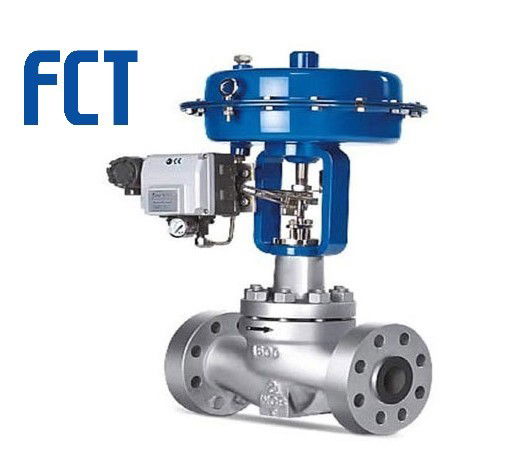
Maximize Energy Savings and Convenience With Advanced Structure Automation Controls
In the world of modern-day design and center administration, the integration of innovative structure automation regulates stands as a critical development. The convergence of modern technology and sustainability has actually birthed a brand-new period where energy efficiency, convenience optimization, and functional streamlining are no more attainable truths but remote ambitions. By utilizing the power of automation, structures can adapt, react, and develop in manner ins which were when unimaginable. The capacity for significant energy financial savings and improved comfort is not just a possibility however a guarantee waiting to be met. This standard change in building management holds the crucial to unlocking a world where ecological conscientiousness and passenger wellness sympathetically exist together within the wall surfaces of our structures.
Energy Effectiveness Conveniences
Energy effectiveness advantages can considerably decrease energy consumption and functional costs in buildings. By applying energy-efficient practices and innovations, structure owners and drivers can attain substantial financial savings while additionally adding to environmental sustainability. One of the main benefits of improving power performance in structures is the decrease of energy expenses. Energy-efficient systems, such as advanced structure automation controls, can maximize using sources like home heating, lighting, and cooling, resulting in reduced energy expenses in time.
Furthermore, boosted power performance can lengthen the lifespan of building equipment and systems. By running more efficiently, heating and cooling systems, light, and various other structure components experience less deterioration, causing lowered upkeep and replacement expenses. Additionally, energy-efficient structures usually command higher home values and rental prices, offering long-term monetary advantages to owners.
In addition, energy performance can improve owner comfort and efficiency. Effectively regulated interior settings with optimal lights and thermal conditions create a more helpful and pleasant work space, causing boosted employee contentment and efficiency. In general, the power efficiency advantages connected with innovative building automation controls are diverse, including price savings, environmental stewardship, and owner wellness.
Improved Convenience Control
Enhancing convenience control in structure environments requires a sophisticated integration of innovative automation systems for ideal passenger health. By using innovative building automation controls, centers can customize the indoor setting to satisfy the specific demands and choices of occupants. control valves.
By including these advanced controls, buildings can not just boost comfort but likewise enhance power performance by optimizing system operations based on actual tenancy and use patterns. Ultimately, prioritizing owner comfort with sophisticated automation systems leads to an extra delightful and much healthier indoor environment.
Operational Efficiency Improvements

Additionally, the implementation of real-time monitoring and analytics devices allows building drivers to identify energy inadequacies and operational anomalies immediately. By continuously keeping an eye on energy use patterns and system performance metrics, changes can be made in real-time to optimize power usage and make certain peak operational performance. control valves. In addition, integrating need feedback techniques into structure automation controls can additionally boost operational performance by dynamically readjusting energy use based upon grid conditions and rates signals
Indoor Climate Optimization
Reliable indoor climate optimization is a basic facet of building automation controls, ensuring residents' convenience and well-being while making the most of power savings. By using innovative sensing units and controls, building automation systems can continually keep track of and readjust temperature level, humidity levels, air high quality, and air flow to develop an ideal interior setting. Keeping comfy and consistent conditions not only enhances occupant satisfaction but likewise improves efficiency and general wellness.
Interior climate optimization likewise plays a crucial duty in power performance. By fine-tuning ventilation, heating, and air conditioning systems based upon check it out real-time information and occupancy patterns, developing automation controls can substantially minimize energy consumption - control valves. For circumstances, applying strategies such as demand-controlled air flow and thermal zoning can assist lessen power waste while ensuring that each location of the structure receives the necessary conditioning.

Lasting Setting Production
Structure automation controls not just enhance interior climate problems for energy performance and passenger comfort however likewise lay the foundation for producing a sustainable atmosphere through tactical administration of sources and systems. By incorporating advanced building automation technologies, such as sensing units, actuators, and smart software application, centers can change and check energy usage in real-time to minimize waste and lower their carbon impact. These systems enable predictive upkeep, determining potential concerns prior to they intensify and optimizing tools performance to enhance long life and effectiveness.
Additionally, lasting environment development expands past power administration to incorporate water preservation, waste reduction, and indoor air high quality enhancement. Structure automation controls can manage water use, discover leakages, and make sure correct waste disposal practices, adding to general sustainability efforts. Additionally, by keeping an eye on and regulating ventilation and filtration systems, these technologies improve passenger wellness and performance while lowering energy usage linked with cooling and heating procedures.
Verdict
To conclude, advanced building automation controls deal substantial advantages in regards to energy cost savings, comfort control, operational performance, indoor environment optimization, and producing a sustainable environment. By implementing these controls, structures can accomplish ideal performance while reducing power usage and improving occupant convenience. It appears that making use of sophisticated automation technology is crucial in enhancing structure performance and developing an extra sustainable future.
Power effectiveness advantages can check out here significantly lower energy intake and operational costs in structures. In general, the power effectiveness benefits linked with sophisticated building automation controls are diverse, encompassing price savings, ecological stewardship, and passenger well-being.
Additionally, integrating need feedback strategies into building automation controls can additionally boost functional performance by dynamically adjusting energy usage based on grid conditions and prices signals.
Building automation manages not just optimize interior environment conditions for power efficiency and passenger convenience yet additionally lay the structure for developing a sustainable environment through tactical management of sources and systems.In verdict, progressed structure automation manages offer substantial benefits in terms of energy savings, comfort control, functional performance, indoor climate optimization, and producing a sustainable environment.